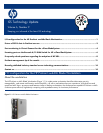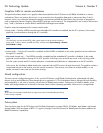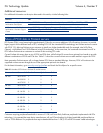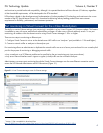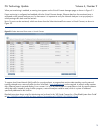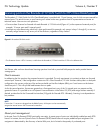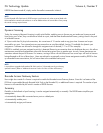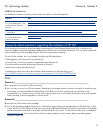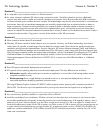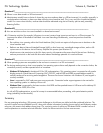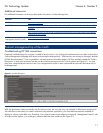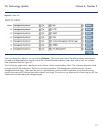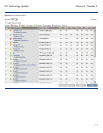ISS Technology Update Volume 6, Number 9
10
Question #7________________________________________________________________________________
Q. Where is user data stored in a VDI environment?
A. Administrators actually have a choice of where they can store end-user data in a VDI environment. It is possible, especially in
non-brokered environments, to place user data within the virtual machine itself. This is very much like a traditional desktop
model. For a more robust solution, end-user data should be redirected using Active Directory policies and, potentially,
Roaming Profiles.
Question #8________________________________________________________________________________
Q. How are activities such as virus scans handled in a shared environment?
A. I/O-intensive activities (for example, full-system virus scans) create a huge impact on end users in a VDI environment. To
counteract the effects of hundreds of individual virus scans launching simultaneously, some best practices should be
followed:
• Run real-time virus scanning within the Virtual Machines (VM), but do not require a full-system scan to be done on the
virtual machine itself.
• Redirect user data to Network Attached Storage (NAS) or other lower-cost, centralized storage solution, and run full-
system scans on this device. Active Directory simplifies this process (see Question #7).
• Minimize user-write permissions to the VM. Many security risks operate at the access level of the end user. Reducing
end-user permissions on the local disk drive also reduces the damage potential of a user-level threat.
Question #9________________________________________________________________________________
Q. What operating systems are acceptable for the end user to connect to in a VDI environment?
A.
The buying market points to what is most popular, but operating system choice really depends on the connection broker, the
connection protocol, and the expected return on investment.
• Windows XP Professional is the desired OS for VDI implementations. This operating system is supported on all popular
display protocols (Virtual Network Computing (VNC), RGS-PC, and MS RDP and fulfills recommendations made by
multiple vendors as far as sizing and management. There are few known limitations with Windows XP, and support is
currently available.
• Linux is supported by VNC and some open source protocols. Connection broker support appears to be nominal for
Linux operating systems in a desktop VM as well.
• Windows Vista is supported by the latest versions of MS RDP and has sparked interest in VDI as a tool for desktop OS
migrations from 2000/XP to Vista.
As with all VDI implementations, a proof of concept is recommended before proceeding, with special attention paid to
sizing (scalability) and functionality.
Summary
Like any emerging technology, VDI presents certain challenges to which there are viable (and often preferred) solutions. The
myriad of support services available from HP, along with website information (including success stories) and third-party-vendor
resources, are meant to help address these issues. Our continuing series of articles on VDI-related FAQs is another source of
useful explanations to common technical difficulties. Watch for the next article to find out more answers.



